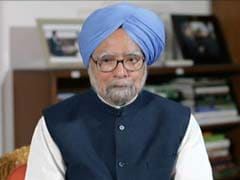What is standard deduction?
Standard deduction allows for a flat deduction from income of a salaried individual towards expenses an employee would incur in relation to his or her employment. No proof is required for claiming standard deduction. Standard deduction was earlier available for salaried individuals earlier till it was abolished with effect from assessment year 2006-07. Standard deduction, which existed till assessment year 2005-06, allowed salaried individuals to claim a flat deduction from his or her salary income of Rs. 30,000 or 40 per cent of salary whichever is less for gross salary Rs.5 lakh or below. If the gross salary exceeded Rs. 5 lakh, a standard deduction of Rs. 20,000 was allowed.
How standard deduction will impact your income tax?
Since standard deduction will be introduced in lieu of medical reimbursements and transport allowance, the net increase in deduction would be a maximum of Rs 5,800. This would help a salaried individual in the highest 30 per cent tax bracket to save around Rs 1,800 in terms of income tax payout.
Comments
However, the increase in cess from 3 per cent to 4 per cent for individual taxpayers takes away some of the benefit arising from introduction of standard deduction. The benefits arising from standard deduction depends on the tax bracket a salaried individual falls in.
Here's how these tax changes will impact your tax liability going forward in 2018-19 (Assessment Year 2019-20), if you are a salaried employee below 60 years.
| For FY 2017-18 | For FY 2018-19 | |
| Scenario - 1 (In Rs) | ||
| Taxable Income | 400000 | 400000 |
| Standard Deduction | 40000 | |
| Medical Reimbursement & Transport Allowance | 34200 | |
| Net Taxable Income | 365800 | 360000 |
| Income Tax | 5,964 | 5720 |
| Savings | 244 | |
| Scenario - 2 | ||
| Taxable Income | 800000 | 800000 |
| Standard Deduction | 40000 | |
| Medical Reimbursement & Transport Allowance | 34200 | |
| Net Taxable Income | 765800 | 760000 |
| Income Tax | 67,630 | 67080 |
| Savings | 550 | |
| Scenario - 3 | ||
| Taxable Income | 1200000 | 1200000 |
| Standard Deduction | 40000 | |
| Medical Reimbursement & Transport Allowance | 34200 | NA |
| Net Taxable Income | 1165800 | 1160000 |
| Income Tax | 167,107 | 166920 |
| Savings | 187 | |
| Scenario -4 | ||
| Taxable Income | 1600000 | 1600000 |
| Standard Deduction | 40000 | |
| Medical Reimbursement & Transport Allowance | 34200 | |
| Net Taxable Income | 1565800 | 1560000 |
| Income Tax | 290,707 | 293529 |
| Additional Tax | 2,822 | |

 Budget 2018
Budget 2018
















